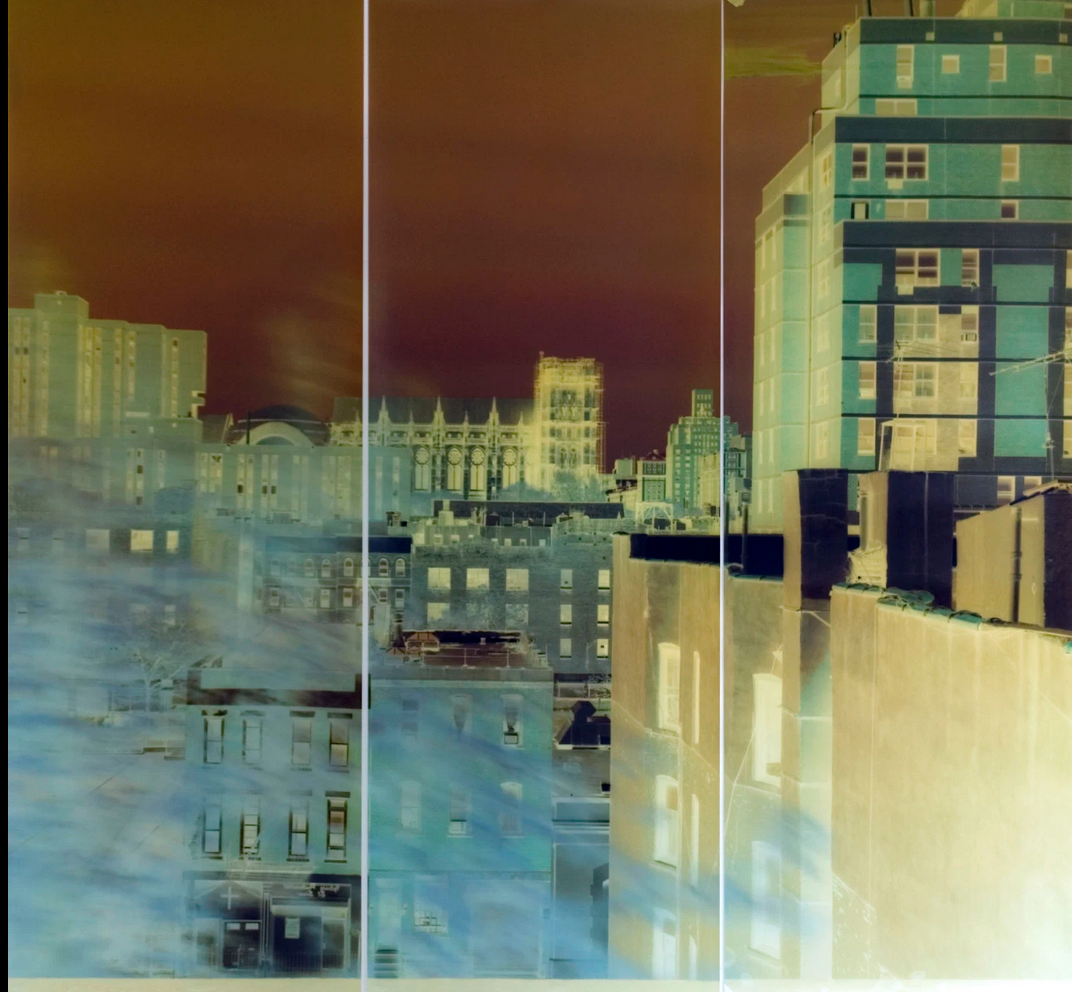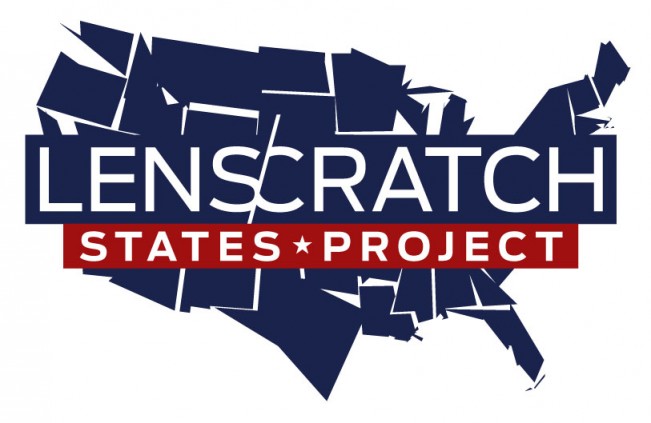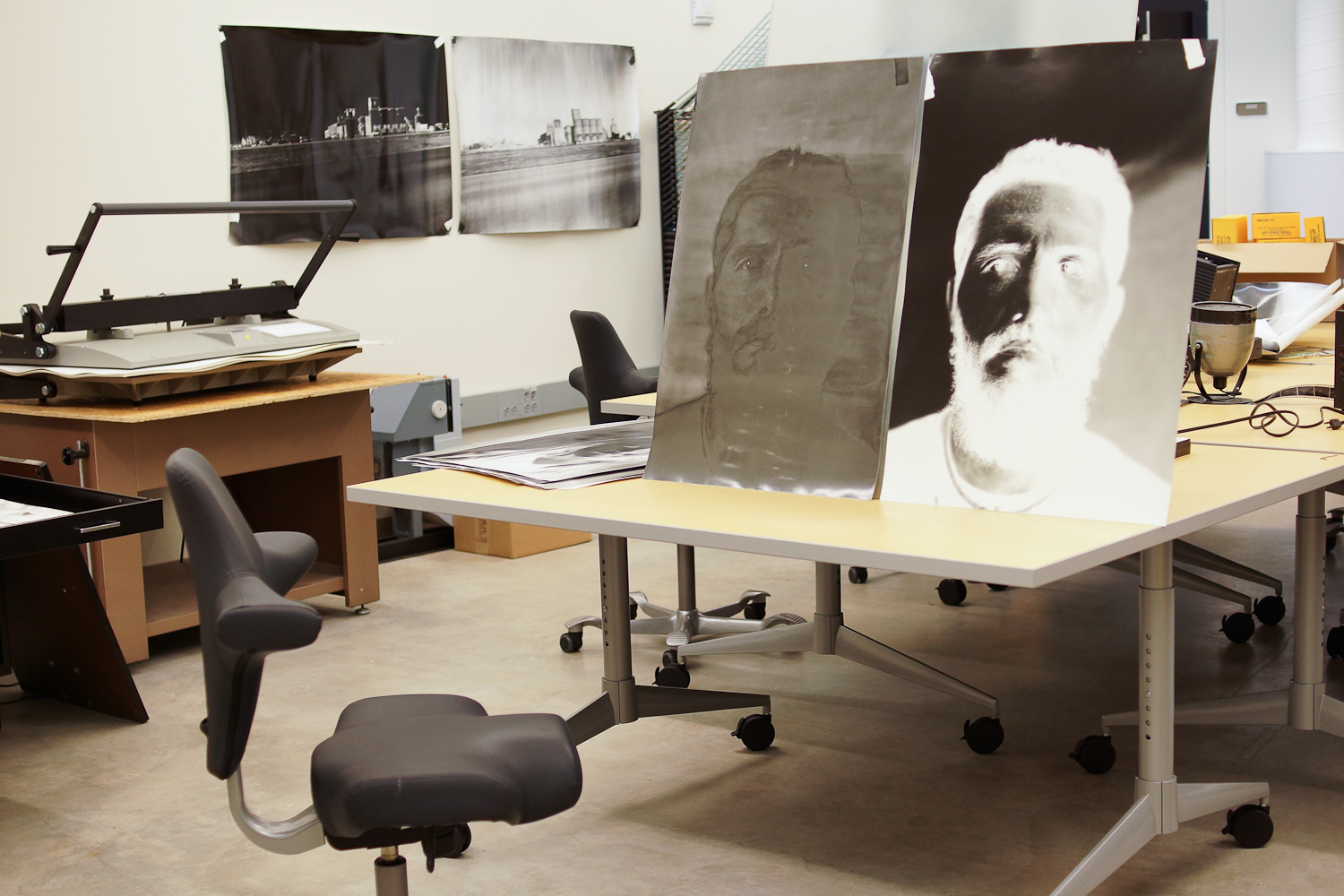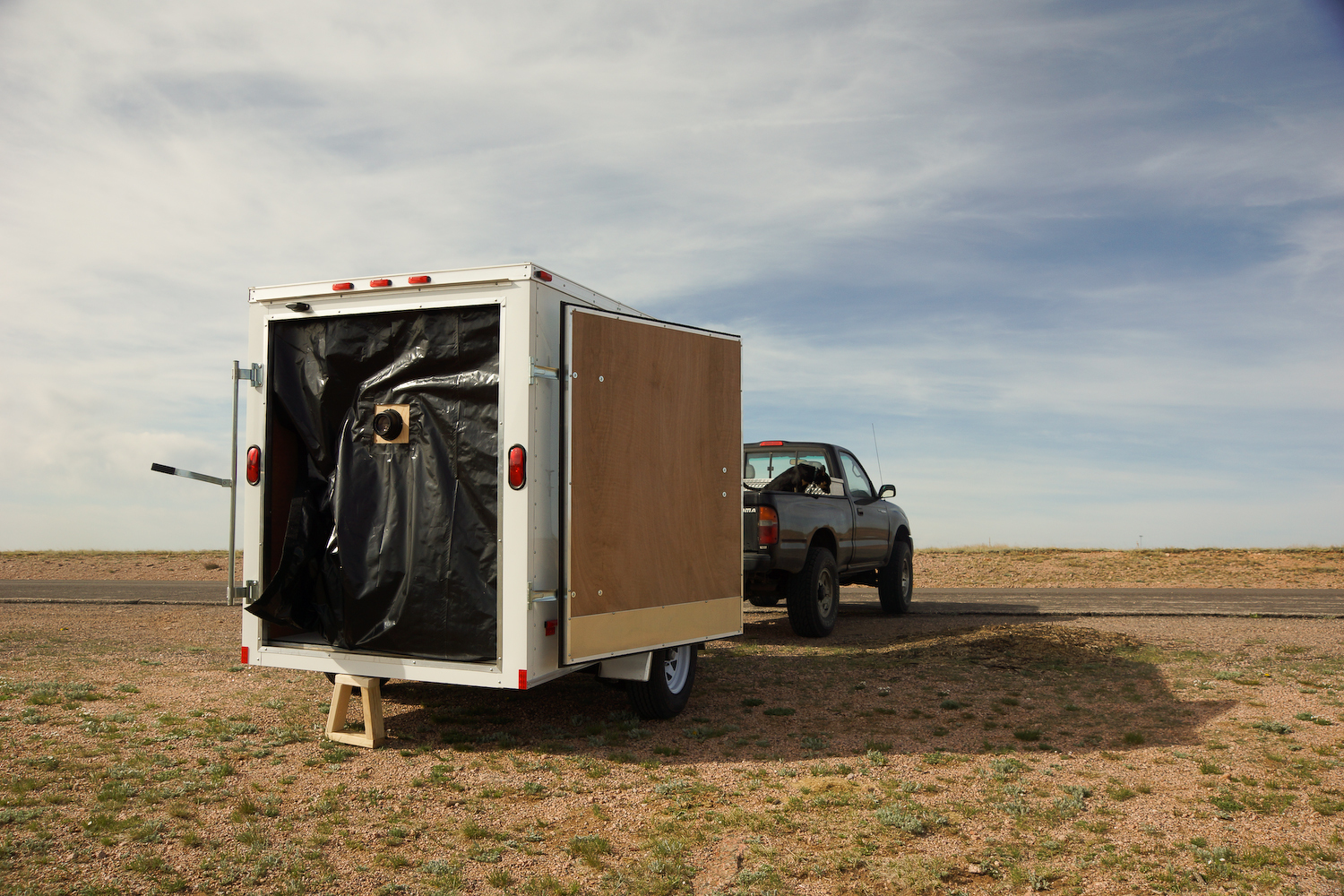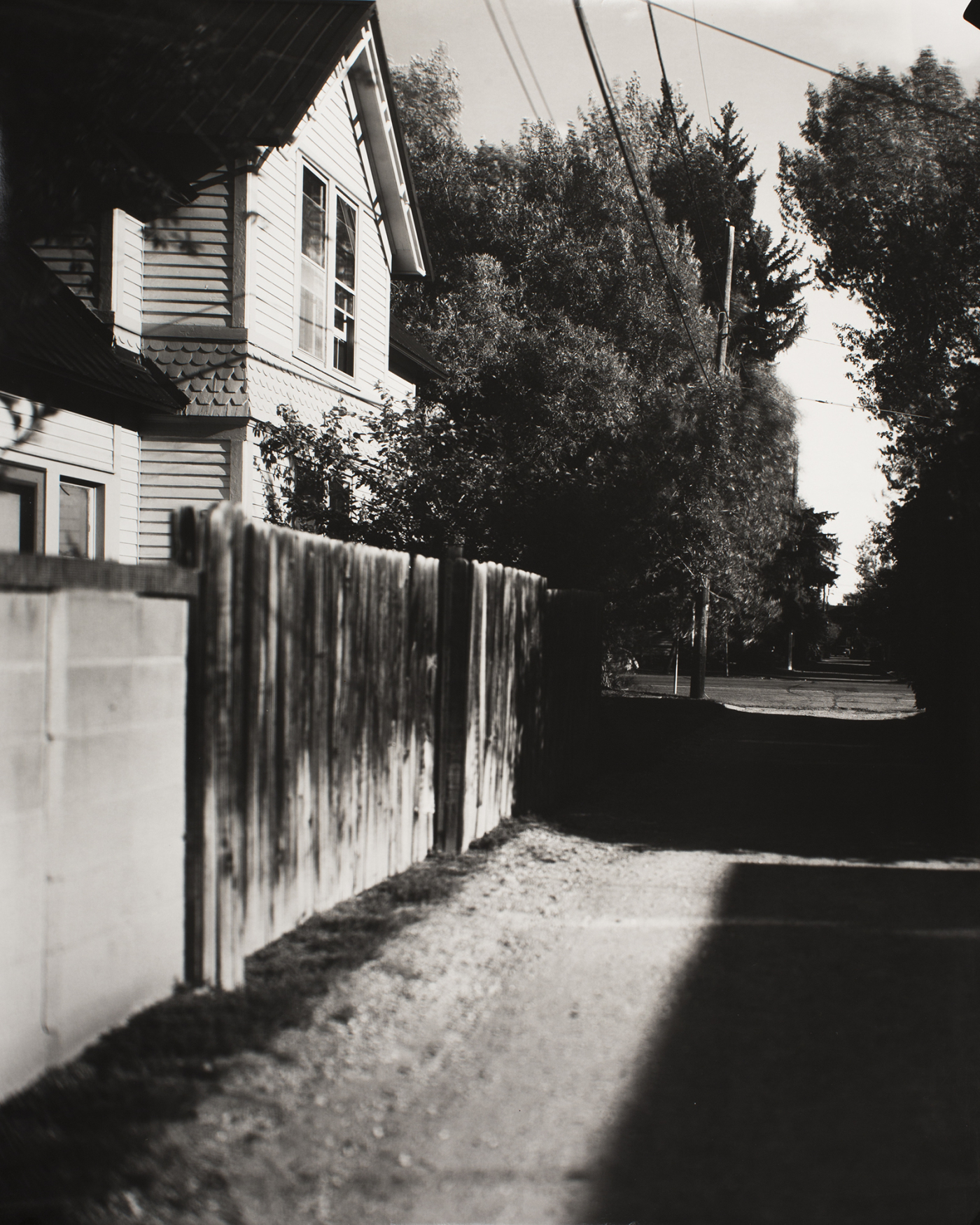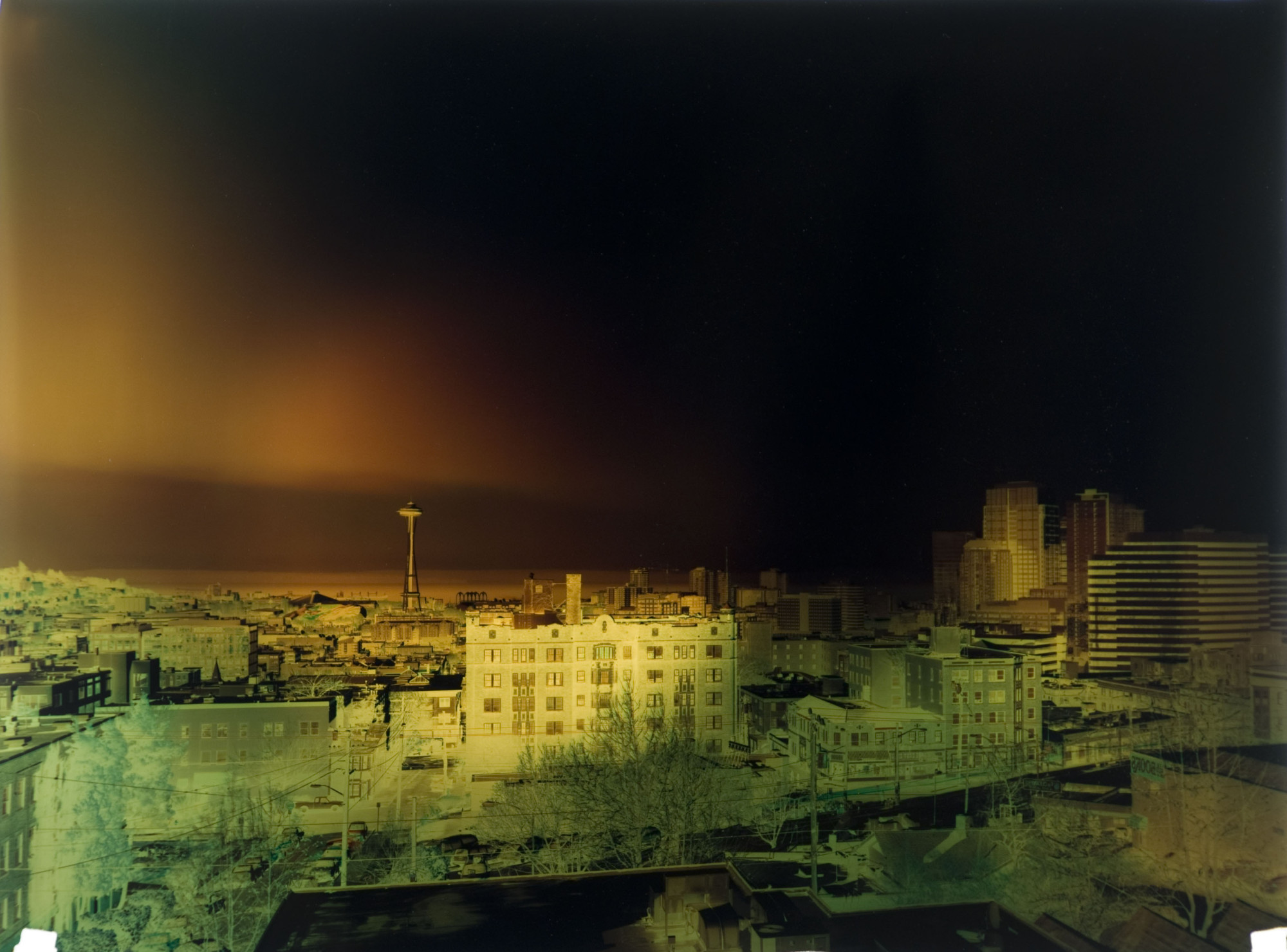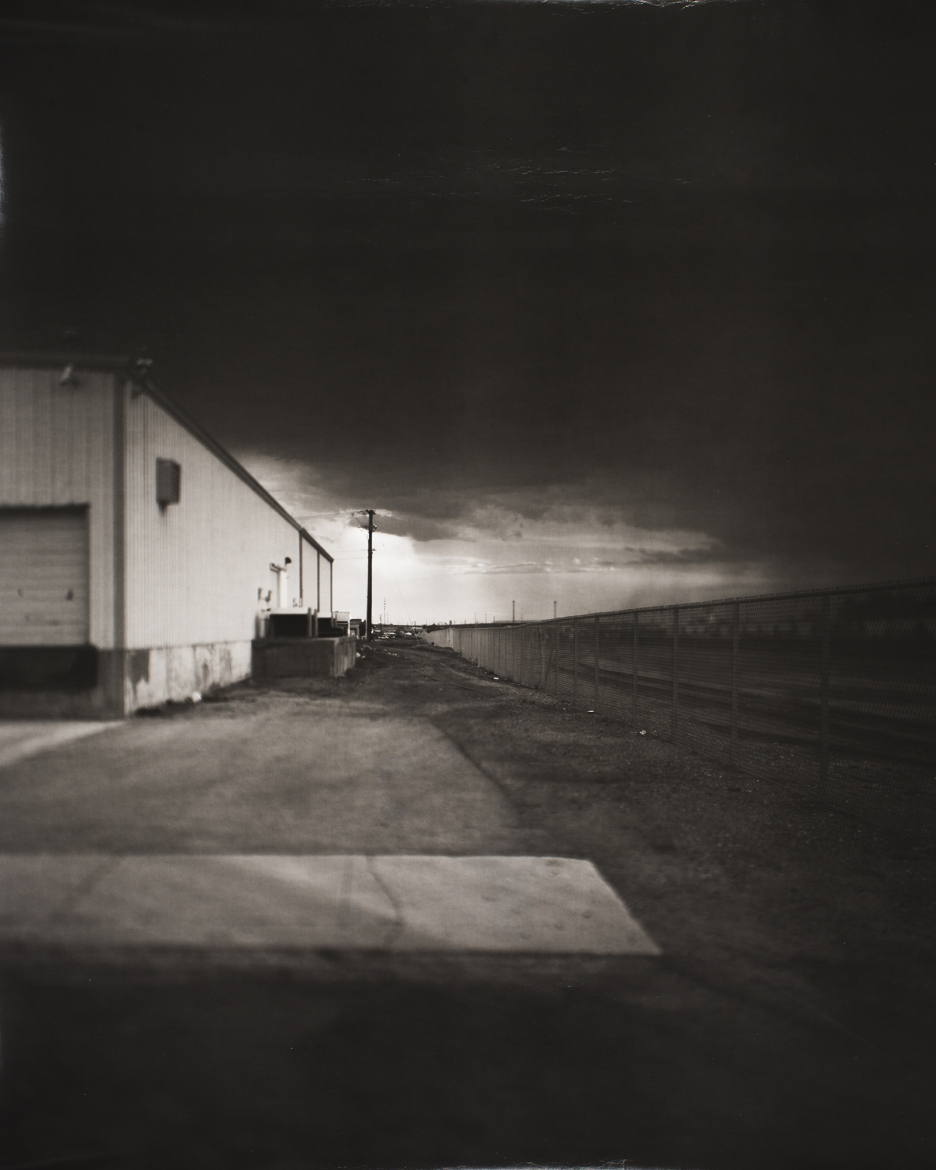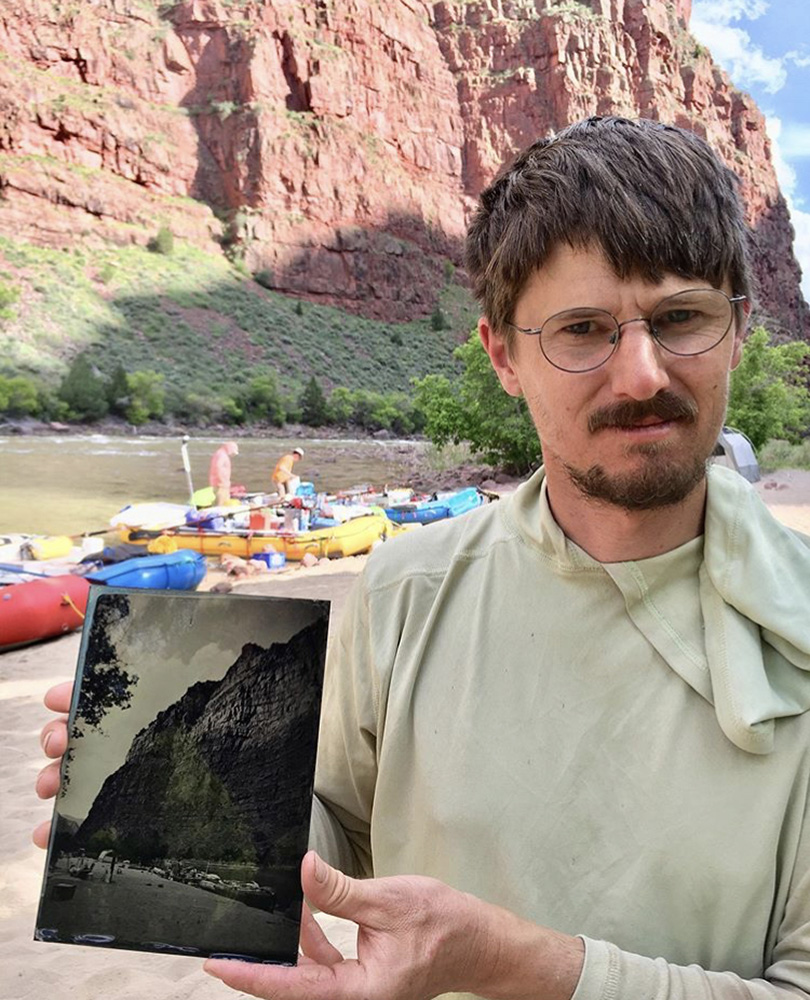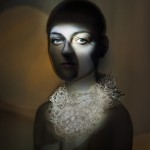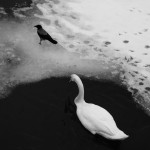Bailey Russel: The States Project: Wyoming
Bailey Russel is a photographer and educator at the University of Wyoming. Russel, a graduate of Princeton and New York University is concerned with the dichotomy between historical processes and contemporary narratives, often employing the use of tintypes, wet plate collodion and camera obscura processes into his practice. A collection of Bailey’s works was recently on view at The Nicolaysen Art Museum in Casper, WY. Bailey is a recipient of the Wyoming Visual Arts Fellowship in 2016 and the Wyoming Institute for Humanities and Reach Grant in 2014.
Within all of your work, process seems to be an integral part. One commonality between many bodies of work is your interest in historical processes (tintypes, wet plate collodion, camera obscura). What is your interest in using those processes in an age where digital camera technology is rapidly evolving? How does the resulting image play off the organic nature and sometimes unexpected results or flaws of those processes?
I like to work using methods that I can understand and dissect. It’s more interesting to me when I can look at a photograph and figure out exactly how it got to where it is, from the chemical reactions to the bending and the shaping of the light. Digital photography is so complex that in some ways, for the normal photographer, it’s almost more archaic than the old methods: you have a magic box refined by a giant corporation in your hands into which light travels and out of which comes a perfect image. You’re an alchemist playing with things you don’t understand. While I’m not a chemist and couldn’t tell you the exact reactions going on, I mostly understand what’s happening in traditional film methods and even wet plate. When the image reacts in a strange way I can figure that out and either solve for it or embrace the flaw.
In the same way, I really enjoy how the inherent flaws of the processes shape the outcome. The process is so forward that you need to account for it when picking your subject. There needs to be a direct relationship between what you’re photographing and how you’re doing it.
I am interested in your Camera Obscura Portraits and how both processes used, reversal bleach and direct paper negative, almost removes any signifiers of present day. In those images, there are only traces of contemporary elements that hint at the time they were made. Most of your other works don’t include a body. What is your main interest with the intersection of portraiture and processes used?
The portraits came out of an interest in old, western portraits from the late 1800’s. Everyone looks unhappy in those old photos for the simple reason that the act of getting your photograph made was a painful one. The duration of time, the amount of light and heat all made for a miserable experience. Sitting for these portraits was equally painful on both sides of the camera: I sat inside a large, hot plywood box yelling at my subject who had to stay perfectly still for 20 seconds before being hit by the pop of every flash I owned (eight flash units of unfiltered light) set ten inches from their face. You can’t hold a smile, you can’t look happy. All you can do is stare into the camera and bear it. So again, the process shapes the outcome while also providing an amazing amount of detail in the direct exposure paired with the most minimal amount of depth of field.
The lack of contemporary signifiers is, in some ways, an unintentional byproduct to the methods used. I didn’t necessarily want to pull these sitters out of time, but I’m also not that interested in the dynamic of contrasting era’s. Instead, the images seem more preoccupied with the idea that photographs aren’t divorced from the concept of a duration of time. They take a period of time to make, whether very short or very long, and are an average of the flow of light throughout that period. They’re also a heavily mediated representation of the world, not a direct representation. Even the cleanest, most accurate digital images are a mediation of the world so why not push it even further and make the work all about that mediation and change?
Your Laramie Alleyways work in a nice mediation of forgotten space (alleyways) within the context of a larger, almost forgotten space (Laramie, WY) within America. I find the banality of many of those spaces tremendously interesting in juxtaposition to the romanticism embedded as a result of using the camera obscura process. What was your initial interest in photographing the alleyways in your local community? After spending what I can image as a great amount of time searching the alleyways for locations to photograph, did you have any revelations about that usage of space?
I built the trailer camera because it had always been a dream of mine to take the room sized cameras I used and make them mobile. Once I had the camera, though, it took me three years to figure out what to do with it. At first it was simply a wonderful teaching tool, a way to get students inside a camera and make them understand how utterly simple the concept was. For my own work, I began by photographing ‘normal’ landscapes: the mountains and hills and trees around Wyoming. None of these worked, though, because of that lack of a connection between the camera and the subject. They felt random and unintentional. It was only when I embraced the shape and mobility of the camera to look at roads and then alleys that it made sense. My truck and trailer take up the entire alley, they block it and fill it and look down at this recessional depth. There is no specific subject for the eye to be drawn towards in these images, just the recession of space inherent to the location, so it becomes all about what decorates and surrounds that space. The fact that these surroundings are an intimate look into the parts of people’s lives they keep hidden from the street became the driving force of this project.
I grew up in a town without alleys like this. Backyards were blocked by houses and fences, a place you kept everything you didn’t want people to see. Here you can take your dog for a walk on a tour of families private spaces, tacitly hidden but open to any curious passerby. This public/private aspect of the alleys fascinated me, especially when combined with the inherent voyeuristic-ness of the camera obscura: to make an image I literally sit hidden in a blind spying on the projection of the view.
Throughout the series, the perspective of the camera does not waver or does so minimally. Was this a product of using such a large camera or does that perspective speak to the way that space is understood?
For me, the mobility of the perspective of the trailer camera shots was a revelation. In comparison to the color negative shots where I used a room in a static building, the trailer camera feels like a point and shoot camera. The idea of static view is a weirdly subjective one when compared against the least mobile of views. I could reposition, zoom in or out by moving closer or further, and basically manipulate my point of view in what felt like an infinite amount of ways. Obviously, I was still very limited in that my lens is fixed a very precise distance from the ground and I can only tilt up and down as much as the trailer hitch allows. But within the context of my work it felt like a radical change.
Your recent exhibition at the Nicolaysen Art Museum was exciting to see and a departure from the Laramie Alleyways work in its’ use of color and geographic location. Do you see a lineage in all of your large scale Camera Obscura works or do you view them all as completely different bodies of work? Do the locations used within your work stem from your direct access to them or are you interested in something specific about those environments?
Both bodies of work are firmly rooted in the concept of the camera obscura. Fresh out of graduate school I worked for the photographer Vera Lutter in New York and learned an immense amount about large scale pinhole cameras. Both of these sets of images are deeply indebted to that knowledge and her work, taking those as a foundation and tweaking the methods. The color images are direct exposures on the color negative paper. I used an eyeglass lens to focus the image and filters to create color separation in the negative. The exposure times are surprisingly short (twenty seconds to a minute) and the results only marginally predictable. While there was a certain opportunism to the locations chosen, I always looked for complex views that portrayed something surreal about the city. Taken in the middle of the day I wanted to convey a little bit of the sense of surrealism that is living in a big city. When I started the project I was heavily influenced by Blue Velvet and it’s idea of a split above/below ground life in the suburbs and wanted to translate that to landscapes of the city.
The trailer images in Wyoming, while technically rooted in the same world, are more about getting to know a new environment rather than complicating a known environment. In some ways they’re an exercise in observation and deep looking, forcing me to spend a long time contemplating an alien landscape and figuring out where I fit into it.
I was lucky enough to view those Room Sized Camera Obscuras and the Direct Image. It is truly a visceral and surreal experience due to the scale and color pallet in many of the works. What role does scale play in the work? Could those large works exist as 8×10 inch prints?
Scale is hugely important to these images. Because they aren’t made from reproduceable negatives, there’s an object-ness to them, a directness that manifests in their size. The literal sheet of paper you see is what I handled inside the camera. As such, there’s a one to one feeling in the images that would be lost at smaller scales, especially when the subjects are as complex as they are. When working in Seattle I created a smaller, 8×10 camera out of a box with a fixed focal length and made small negative images. These worked as well as long as they were graphic and dynamic. I lost the subtlety of the larger images and instead looked at simpler forms like old billboards and advertising signs. The scale dictated the subject to a certain extent.
Being a recent transplant to Wyoming myself, I have noticed that the landscape and social environment, or lack of it has begun influence the new work I am making here. Since you have you lived in a range of different urban environments that are melting pots for an array of different cultures like Seattle and New York City, does living in Wyoming, a place that lacks tall buildings, dense population and a diverse culture have any impact on the way you create images or think about image making?
Figuring out what to do, how to change when I moved to Wyoming was a daunting thing. In Seattle and New York my work was predicated on access to two things: tall buildings with interesting views and color photo paper processing machines. In Wyoming the tallest buildings are five stories and the closest processor is in Portland or San Francisco so obviously things had to change. This led to mobility with the trailer (something I could never have done while living in an apartment in the city) and a different relationship with the landscape. In New Jersey where I grew up there is no horizon. The entire state is a forest on rolling hills. The landscape is completely ‘closed’. Wyoming is the opposite with open land everywhere, horizons surrounding you and emptiness and weather being the dominant forces. Coming to grips with this took a whole series of projects from camera trapping animals to traditional digital landscapes. In hind sight it seems like each of these was a way to take a step closer to the landscape and try to understand it a bit better.
Much of your process is based around analog photography and process of yesteryear, is it difficult to work with those processes and materials in a location like Wyoming that is so far removed from labs and photo retailers that provide access to what is needed for you to create? Do those materials provide direction into what you choose to depict in your images and present to the viewers? Does the relative preciousness change the way you use and think about them?
One of the things I enjoy most about the analog processes I’ve used lately is how the slow down the act of creating photographs. I both get to and need to think through all the steps needed to create an image and justify each decision I make. Living far from the cities which house my materials suppliers only compounds this as everything must be thought of far in advance. That said, because the processes I’ve been using lately are so hand-made I don’t really miss labs. I’ve built an ecosystem at the University that works for me and allows me make the work I want to make. Because I’m in a University environment, I even have access to some machines I wouldn’t elsewhere like laser cutters, 3-d printers and fully functioning wood shops, all of which have shaped one project or another over the last few years. Even the constant influx of old donated equipment has been a boon as I’ve started making chemiograms from expired paper and chemicals. That said, in some cases it does feel like projects are driven by opportunity more than choice, but as I find myself continually saying to my students, limitations frequently lead to better work.
Check out Bailey’s work with the Powell 150 Project, retracing John Wesley Powell’s expedition from Green River, Wyoming to the mouth of the Virgin River in present day Lake Mead this Summer at multiple venue. There are several museums that will be exhibiting work made by the crew of the Powell 150 Project, including geologists, artists and law professors. You can see the work at the Sweetwater County Museum in Green River, WY from May 14th through December 2019, the Uintah County Heritage Museum in Vernal, UT from May 30th to December 22nd, the John Wesley Powell River History Museum in Green River, UT from April 7th to March 1st and at the John Wesley Powell Museum in Paige, AZ from April to November.
Posts on Lenscratch may not be reproduced without the permission of the Lenscratch staff and the photographer.
Recommended
-
Ragne Kristine Sigmond: Portraits of Painterly LightDecember 2nd, 2025
-
Mary Pat Reeve: Illuminating the NightDecember 1st, 2025
-
Ricardo Miguel Hernández: When the memory turns to dust and Beyond PainNovember 28th, 2025
-
Pamela Landau Connolly: Columbus DriveNovember 26th, 2025
-
MATERNAL LEGACIES: OUR MOTHERS OURSELVES EXHIBITIONNovember 20th, 2025

